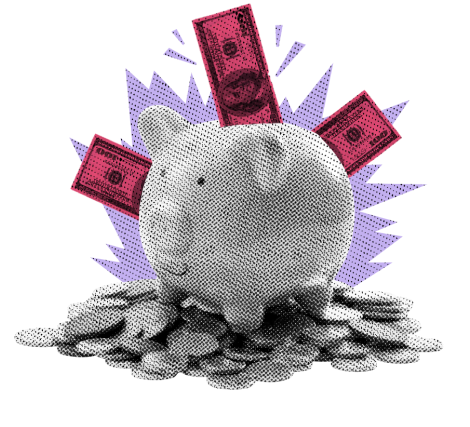Tesla missed, Alphabet crushed it. But guess who gets the 180x PE multiple?
KEY TAKEAWAYS
-
Tesla’s valuation is heavily based on future growth rather than current fundamentals
-
Q2 earnings revealed weak free cash flow and shrinking unit sales
-
Alphabet’s Q2 results were strong across revenue, margins, and all major segments
-
Despite strong fundamentals, Alphabet trades at a lower valuation than peers
-
The black and white cookie serves as a metaphor for balancing growth expectations
MY HOT TAKES
-
Tesla’s $300+ stock price might be more about Musk than math
-
Alphabet is being priced like a legacy media company, not an AI leader
-
Investors are rewarding hype over earnings—again
-
Valuation gaps like this won’t last forever
-
Not all growth is created equal—some of it actually earns money
-
You can quote me: “With Tesla, it would appear that the vast amount of the company’s share price can be attributed to the what may be versus the what is.”
Black and White. On the corner of 87th Street and 1st Avenue in New York City’s upper east side is a place where history was made in the early 1900s. It is said to be the birthplace of the black and white cookie. Now, I am thankful–so thankful–that my followers come from amazing places all around the US and the world, and I intentionally lace my musings with some very New York things in order to give you a flavor of what it’s like to be present in the center of the financial universe. Of course, here in NYC, the upper east side is considered almost another country from downtown's financial district where our iconic New York Stock Exchange sits. Far though it may be, the black and white cookie reigns over most others downtown, in the far ends of the 5 boroughs that make up the city, and now, even the world.
What makes it so special? Well, it tastes great for starters, but, I think its mystical symbolism has a lot to do with it as well. You see, the cookie is a soft, cake-like vanilla cookie topped with half chocolate fondant and half vanilla fondant icing. It is that half chocolate half vanilla that gives it its simple name, but the symbolism of the juxtaposing colors can be applied so broadly. Famous New York comedian Jerry Seinfeld in a 1994 episode of his long-running sitcom exclaimed “if people would only look to the cookie, all our problems would be solved.” This morning–the morning after we got earnings from the first 2 of the Magnificent 7 stocks–I am looking to the cookie for an analogy.
Let’s start with Tesla. The stock was down by some -17% as of last night’s close, but it was down as much as 45% at its low point in April. As stocks recovered in May, Tesla certainly participated, however its continued growth was hampered principally by CEO Musk's very public involvement in politics. Also very public has been the company's foray into humanoid robots, a launching of its long-awaited robotaxis, and… well, everything else Musk himself is involved in, including SpaceX, X, and xAI. Oh, and also the fact that its unit sales growth is crumbling–but that is secondary. “Wait what,” you exclaim, “it’s a car company, isn’t selling cars important for its existence?” Good question.
In Q2 GM delivered 746,588 vehicles in the US and its old competitor Ford delivered 612,095 units. Its new competitor, in contrast, delivered 384,122 vehicles globally. Now, I know that EVs is an emerging segment and that 384k delivered vehicles is extremely impressive, but its performance pales in comparison to the competition. Over the past 12 months, Tesla’s gross margins are a solid 17.5% compared to GM’s 18.5% and Ford’s 8%. When it comes to earnings growth, GM stands out with a 29% gain while Tesla’s declined by -13.5%, and Ford’s fell by -20%. Of course, there is so much more that goes into a stock’s valuation, and based on these very limited stats, you wouldn’t expect its valuation to top the group by any means, but you couldn’t be more incorrect in your expectation. Tesla’s forward PE multiple is 180x while GE’s and Ford’s are 5.7x and 10.5x respectively. Ok, I am sure that you are not surprised that Tesla is more expensive than its competitors, but that nosebleed level seems terrifying no matter how well the company is doing–or not doing.
Last night, Tesla’s Q2 earnings release was… well, I am not sure how to classify it without using unsavory vernacular, but let’s just say they weren’t great. The company missed in all major areas except margins which were slightly better than estimates. Free cash flow–you know, the essence that all that is in business–came in–80% below estimates, which is abysmal, given its importance. Given a blended average free cash flow multiple (GM and Ford) of around 4.3x, Tesla’s trailing 12-month free cash flow should put the stock at less than $10 a share, and yet it closed at $332 last night. How can this be? Well, a stock's value is the present value of future cash flows plus the present value of future prospects. Those future prospects could be expected future growth beyond the known window of forecast based on new business prospects, etc. In growth companies, a large portion of a stock’s value comes from those future growth prospects the name implies. With Tesla, it would appear that the vast amount of the company’s share price can be attributed to the what may be versus the what is.
Now I know that you are well aware of this, but Tesla investors are clearly investing in CEO Elon Musk and the great potential that will come from his steady hand on the helm. His visionary leadership is the stuff of legends, but what is that worth? Is it worth a $300 per share premium? Certainly some investors think that it is, because the market–the ultimate arbiter–has allowed these price levels to exist.
That covers the first half of the cookie. Let’s have a look at Alphabet/Google, another member of the exclusive Mag-7 team. Its stock is virtually flat for the year, and it too has had a comeback from April’s lows which saw the stock down by as much as -23% on the year. Year to date the stock has lagged the S&P 500, the Mag-7 (including Tesla), and the Communications sector. Though it is hard to find comparable companies given its vast portfolio of business, we can look at a reasonable blend of comps and note that its forward PE of 18x is cheap compared to the 26.8x median PE of its peers. For some further reference, Meta is probably Alphabet’s closest competitor as far as comps go, and it has a forward PE of around 22x.
Let’s get crazy for a moment and remember that the company owns YouTube. Based on revenue alone, a standalone YouTube is estimated to have a value that would eclipse its next largest media competitor Netflix. As a point of reference, Netflix is far richer than Alphabet with a forward PE of 44x. That statement can be turned around to read that Alphabet is far cheaper than its nearest media rival, Netflix. Let’s remember that Alphabet is far more than a media streaming company. Alphabet has Google search and advertising as well as Google Cloud, and underlying all that is its Gemini AI offering, which competes with OpenAI’s GPT 4, Anthropic’s Claude, Microsoft (partnered with OpenAI), and Meta’s LLaMA 3. It is unarguably a top-tier competitor in the emerging space. Did I forget to mention that Google is far ahead of the competition in robotaxis?
Alphabet released its Q2 earnings last night as well, and the results were a polar opposite to Tesla’s. The company handily beat all major estimate categories. Revenues grew by 13.8% and earnings by 12.8% year over year, and gross profit margins came in at a consistent 60%. Looking more closely at year over year revenue growth, we note that Services, Advertising, Search, YouTube ads, and Cloud grew by 12%, 10%, 12%, 13%, and 32% respectively! Can you see where this is going? Alphabet displays all the characteristics of a healthy company not only in its core, revenue-generating business, but also with its future growth prospects.
Remember how when we looked at Tesla, we recognized that a significant amount of the company's stock value was attributed to its “future growth prospects?” Based on what we know about Alphabet and Tesla, it might be argued that either too much value has been put on Tesla’s future prospects, or not enough has been put on Alphabet’s. Another way of looking at it would be to say that, based on current business and near-term earnings growth, Tesla may be expensive and Alphabet cheap. Further, based on future growth prospects, Tesla may be expensive and Alphabet cheap.
Now, I have covered two similar but very different companies. Both are top-weighted members of the S&P 500 and have the distinction of both being a Mag-7 member. Both are growth companies which are expected to deliver continued earnings growth long into the future. One’s future growth prospects appear to be wildly overvalued while the others seem to be undervalued.
That brings us back to the black and white cookie. There are many ways to eat the cookie and techniques vary vastly amongst New Yorkers. Some choose to only eat the chocolate half and feed the remainder to the pigeons (we have lots of those), and vice versa (though I would question the sanity of those folks). Some start with the vanilla side and work their way to the chocolate, saving the best for last while others do the reverse (I can respect that). Me? I choose to eat it straight down the middle. I prefer diversification in my bites, and depending on my mood, I may lean heavier on one side or another. With these first two Mag-7’s down, both as different as black and white, investors are faced with choices. Black, white, or both? Before you choose, I suggest you do your homework, as always. I also suggest that you try a black and white cookie, if you haven’t.
YESTERDAY’S MARKETS
Stocks rallied yesterday after the administration announced that it cut a trade deal with Japan. Months ago, a 15% tariff would have been scary, but investors have been reprogrammed and now celebrate–because it could have been worse–cheers. Earnings picked up pace yesterday giving markets plenty to take in–good and bad–the jury is still out.


.png)

